|
February 16, 2003
Snow Shelters & Tracking
(Photos and report by Walter
Muma) |
|
|
|
Six people braved cold temperatures and wind (= very cold wind chill) for a day of snow shelter building, tracking, and
nature
exploration. More people were scheduled to come, but were unable to due to the
weather (wicked snow squalls off Lake Ontario) and illness. We met in a
semi-wild area west of Toronto.
We spent most of our day building a snow shelter.
|
|
|
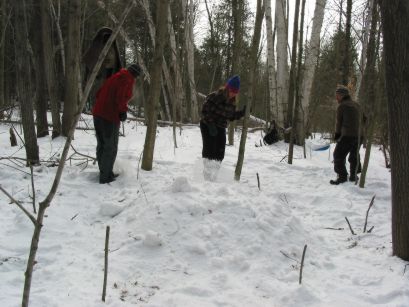 |
First, we prepared the site of the shelter by scraping away the snow
that was there, and using it to start the pile. We had to break up the
snow, as it had crystallized during previous warm weather.
We used two shovels and our feet.
|
|
|
|
|
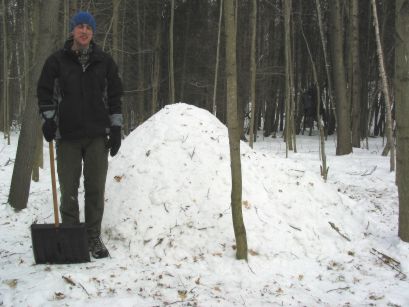
|
We piled snow up to a height of about 3 feet. It was
our intention to make a "demonstration" shelter, rather
than one large enough to accommodate us all.
Here's the finished pile of snow.
We let this sit for about an hour, while we went off
and explored and ate lunch.
During lunch we found the first of two porcupines we
saw that day. Plus lots of deer tracks & scat, porcupine tracks
& scat, ruffed grouse tracks, and more. A great day for
tracking!
|
|
|
|
|
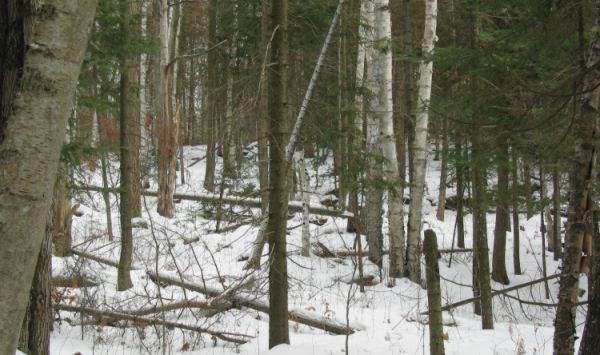
|
|
|
|
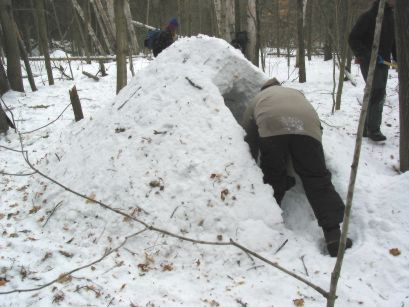 |
When we came back we found the snow pile had solidified enough to
start digging out the shelter.
The method we chose was to excavate the snow from the interior
through a large "rear" door that would later be closed back
up.
|
|
|
|
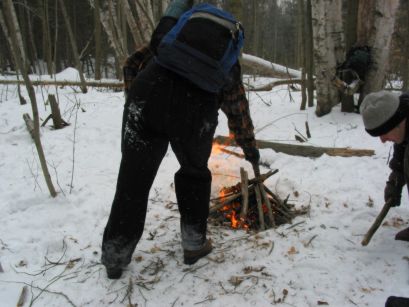 |
It was a very cold day, so we had a little fire going for awhile. We
actually built it as a learning experience for one of the group who
had never made a fire outdoors before.
|
|
|
|
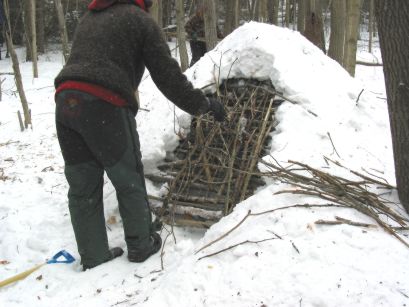
|
The "rear" door was closed back up after most
of the interior excavation was completed, using a cross-thatch of
sticks and branches. Snow was then scooped back on top of this
"door" to close it up.
|
|
|
|
|
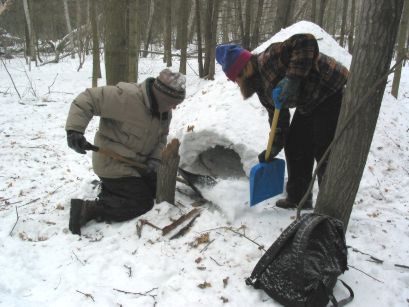 |
The next step was to dig out the small entrance doorway
at the other end of the shelter. The snow that was scooped out
through the "rear" door in the pervious step was piled up
at this end to create a small tunnel for the entrance. A small
entrance helps to keep the wind out and the heat in.
|
|
|
|
|
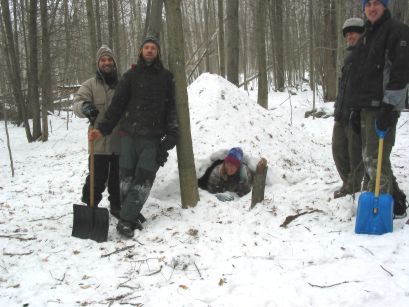
|
Done!
|
|
|
|
|
Here's a view from the inside (L) and of four of us inside
the shelter.
We could have fit all 6 of us inside, no problem.
|
|
|
|
|
|
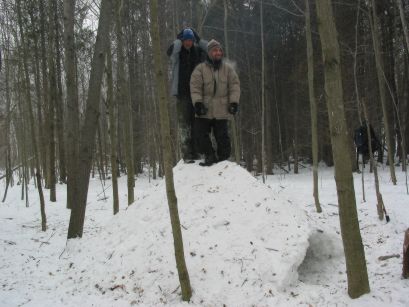 |
Snow shelters are stronger than you think! We tried having 3 people on
top, but it collapsed.
|
|
|
|
|
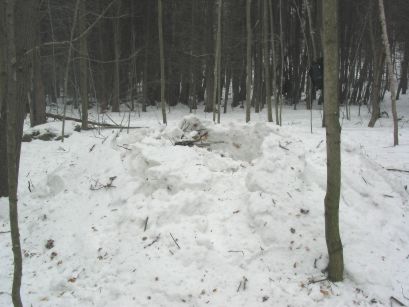
|
After it collapsed, we disassembled it completely, in order to reduce
signs that we had been there. We were in an area that people sometimes
walk through, so we wanted to remove signs of our project in order
that their nature experience would not be impaired.
This picture shows the beginning of the disassembly process.
|
|
|
|
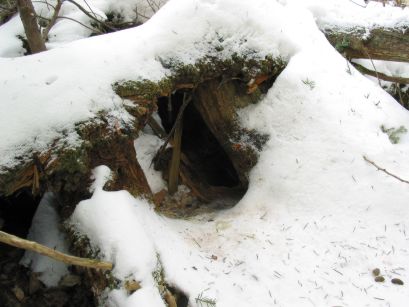 |
After cleaning up our area and putting out the fire and covering it
up, we went exploring in the nearby swamp.
Here's a porcupine den we found under tree roots.
We also did some tree and plant ID, including water hemlock, the
deadliest plant in North America. And of course tracking: rabbits,
deer, porcupine, ruffed grouse, rodents of some sort, squirrels and
more!
|
|
|
|
|
We had a very rewarding day, and had a great experience building the snow
shelter. And awesome tracking and nature discoveries. Thanks to everyone who
came out for sharing what they knew and learning from each other!!
There's more info about snow shelters on
the Wildwood Survival website.
|
|
|
| |